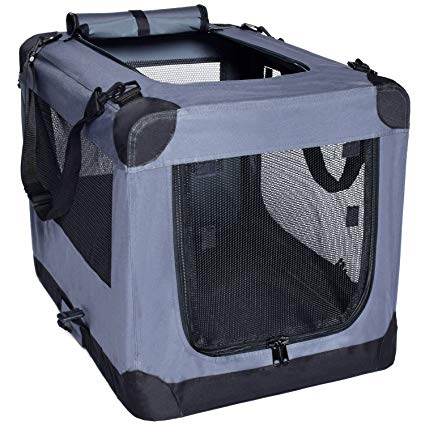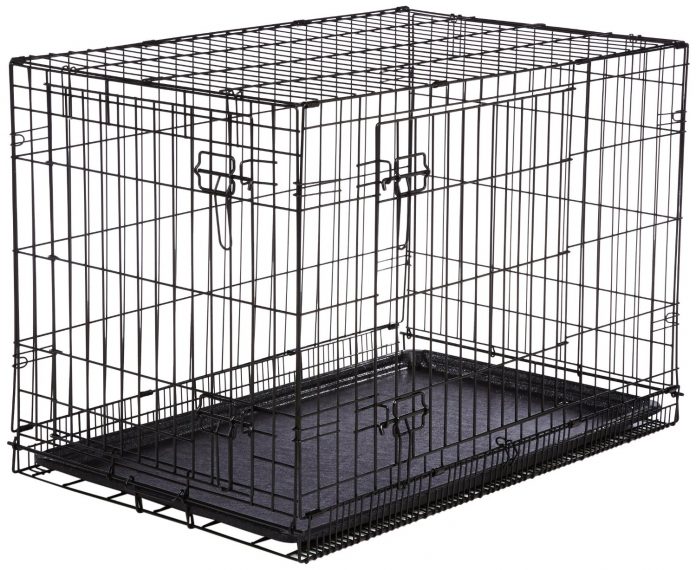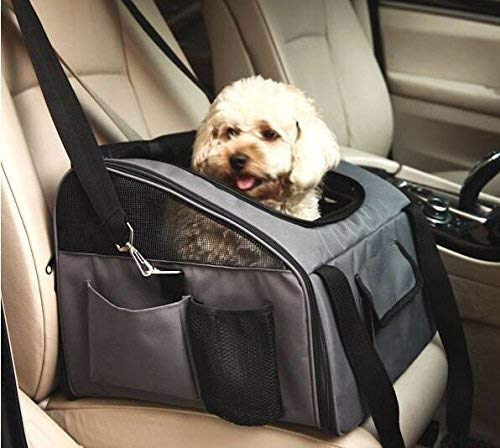You and your family are excited because your new puppy will be coming home soon. But you need to know more than just how to bring a puppy home in the car. You need to prepare for the journey and the homecoming.
These 9 steps will ensure your puppy comes home safely when you pick him up from the breeder or shelter.
1. Clear your schedule
Firstly, pick a weekend that’s quite so you can all be at home with your new puppy. You don’t want to be leaving puppy at home by themselves in the first couple of days, you want to be able to help him get to know his new environment and establish a routine.
Avoid birthdays or having lots of people come and visit. It’s going to be a big move for pup – it can be confusing and frightening for him, so you need to make time to ensure the transition is as gentle as possible.
2. Avoid full bellies
If you’re picking your puppy up from a breeder, a shelter or someone’s house, ask them to give puppy a small amount of food a few hours before you are due to pick-up. You don’t want him to be hungry. But, more importantly, it is likely to be his first car journey – so, you don’t want your puppy to have a full belly and get car sick!
3. Take a note pad
Often the breeder, shelter or owner will have a lot of information to share with you. Ideally, they will have written down puppy’s routine for you, some breeders and shelters will even provide you with a booklet including hints and tips on how to care for your puppy.
Either way, get a notepad and write down your questions before you leave home. Then take the time while you are there to write down all the hints and tips they share. You might think you’ll remember them but believe us, there’s a lot going on in those early days, so it’s a good idea to take some notes.
4. Two is better than one
Picking up puppy is not a solo mission. It’s a good idea to take someone with you. A friend or family member can then provide reassurance and distraction for puppy whilst you are driving.
You could be lucky and your new Furbubba might sleep the whole way, but the chances are he’ll be distressed after leaving his home and siblings. Who wouldn’t be! And it can be very dangerous trying to settle a puppy whilst concentrating on driving.
5. A little play time
Your puppy is likely to be more settled on the drive home if he has had some exercise and play before pick up time.
You also want to allow some time when you get there, just so you can connect with each other whilst in his environment. So having a little play before saying goodbye and going in the car is a good idea. If you don’t have time, ask the owner if they can provide a little exercise before your scheduled pick-up time.
6. Handling techniques
Just like a baby, your puppy’s body is fragile, so he will need to be handled very carefully. Young children often pick-up puppies under their arms and let them hang – which is not recommended.
How to pick up a puppy
Teach kids that the best way to pick up and hold a puppy is to follow these steps…
- Firstly place one hand under his chest – come under his belly through his front legs toward his chest. But don’t lift yet, this should just be enough to stop him from moving away.
- Then use your other hand to pat from his head down his back to his rump, folding his tail under and lifting his rump up.
- Pull him close to your body so that he is secured for a nice tight cuddle.
With this method, your puppies weight is supported in a sit position with one hand, whilst the other hand holds and balances his front and the side of your body is pressed against his side.
If you show children correctly from the start, they’ll be proud to pass the technique on to others.
Cradling
Remember, being on his back is not natural so cradling puppies like a baby and tickling their tummies can result in your puppy squirming and jumping out of your arms – which is very dangerous.
The put down
When placing him back down, ensure he is not let free to jump out of your hands – as his bones are not yet developed enough to take the weight of jumping, especially if you’re standing up. Always place him fully on the ground, paws first!
7. Safe carriage
With all the tips above in place you now need to think about transportation by car or by air.
Bringing puppy home in the car
In most western countries, it is illegal to have a puppy or dog in your car unrestrained. For example…
- American dog restraint laws
- UK Highway Code – driving with dogs
- Australian Rules and Regulations for Car Travel with your Dog
- Canadian – Ontario Highway Traffic Act
Whilst a seat belt harness or car guard may be appropriate for an adult dog, a puppy is best transported in a pet carrier or cage.
This is the best way to ensure their safety and yours. The last thing you need is an active puppy bouncing around the car whilst you’re driving. You wouldn’t bring a baby home in a cardboard box, the same goes with a puppy.
A travel crate or cage may be confronting at first but with some friendly play and a treat, he’ll soon get used to it and enjoy the security it brings. Make sure you choose something that can be secured and covered. Some car travel products are open which are really no safer than a cardboard box.
A soft-crate or cage option can also be used for more than just travel. It can become their new “den” at home (see Part 2: New Puppy Checklist). It is a place where they can hide away and have some downtime when they need it.
When the same one is used at home and then in the car, your puppies will have a greater sense of comfort and security whilst he is learning how to travel in the car and that it can take him to happy places, like parks, not just trips to the vet for injections!
Or from far, far away
Sometimes a breeder might not be accessible by car and air travel is the only option. If your puppy is being transported by plane, you will need an airline approved crate and there are specific requirements that will need to be met.
Your best bet is to use a company that specialises in pet transportation. Check out IPATA – International Pet and Animal Transport Association for more details.
8. The great escape
When you arrive home, everyone will be excited and focused on the new puppy. And it is really easy to get distracted and forget little things like closing the doors behind you, particularly if you have stairs in the home or are on a busy street. A panicked puppy can be fast and you’d be surprised how many great escape stories there are out there! Always double check doors that lead outside and don’t let puppy out of his travel crate until you are ready.
9. Space and time
Strange people, unfamiliar surroundings, new smells and sounds. It can all be overwhelming for a puppy if lots of excited people are crowding to see him and he’s being passed around.
Be prepared for puppy to need some space and some alone time as soon as you arrive home. He will no doubt be exhausted from the stress of the experience and your love and enthusiasm for him might be a little overwhelming at first.

Now that puppy has come home in the car and is settled, it’s time to read Part 4 of our New Puppy Guide: What to expect in the first few weeks.

Got any experiences to share for other new puppy owners who are bringing their puppy home? Share your hints and tips below.




The part of your article that listed down various puppy handling techniques was extremely helpful to read. As a person who has never owned a dog before, I could easily see myself making mistakes whenever I hold it or carry it to another place like a room or a car. I’ll make sure I practice these techniques before looking for a pet store that can help us adopt our first pet.